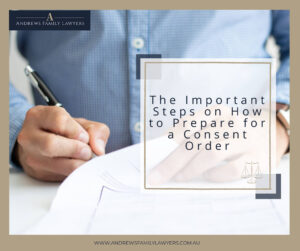When you’re dealing with child custody arrangements of your child, it’s crucial to get the process correct. Decisions around parenting arrangements have long term effects on children and co-parents. There are different options available. We want to use this article to ensure you understand the best plan for you and your family.
Documenting parenting arrangements
Decisions around parenting can be documented formally or informally.
Informal arrangements
If parents are on good terms, they can draft a parenting plan to document their agreement. While this option can work for some, it has risks. Since parenting plans aren’t legally enforceable, it’s difficult for a parent to hold their former spouse accountable if they breach the agreement.
Court order
The other option is to apply to the Court for a court order. If the parents have an existing parenting plan, this can be formalised through a consent order. This is generally recommended for the benefit of the child.
If parents can’t agree on an arrangement, they’re required to attend family dispute resolution to mediate their differences. If dispute resolution doesn’t produce a suitable outcome, the Court can grant parenting orders that meet the best interests of the child.
Types of Child Custody Arrangements in Australia
There are many ways to arrange child custody in Australia. There are two primary custody areas: physical custody and legal custody.
Legal custody
Legal custody refers to a parent’s right to make decisions affecting the child’s life. In the Family Law Act, this is referred to as parental responsibility.
Parental responsibility
The Family Law Act defines parental responsibility as all of the duties, powers and authority that parents have in relation to their child. The Family Court previously assumed equal shared parental responsibility to be in the child’s best interests. This meant that both parents had an equal say in major long-term decisions such as their child’s education, healthcare and living arrangements. However, it no longer starts from this position. Regardless, we recommend co-parents find a way to both maintain a meaningful relationship in their child’s life.

Physical custody
Physical custody refers to the child’s living arrangements. Parents can choose for the child to live primarily in one residence, or share physical custody.
Joint custody
Parents can decide that the child will split their time between two residences. This can work, but there are many factors you should consider before choosing this option.
Proximity. If you don’t live in close proximity to the other parent, it can make splitting living arrangements difficult and stressful for children.
Parental capacity. Are both parents able to accommodate caring for their child on a regular basis? For example, if one parent travels a lot for work, these arrangements may not be appropriate.
Specific needs. If a child has specific medical requirements or other needs, traveling between residences regularly may be inappropriate.
Full custody
Often, full custody will be granted to one parent. This can be the best arrangement for various reasons.
Preference. One parent may not be inclined to have the responsibility of having their child live with them.
Availability. If a parent cannot be present to take on parental duties, then the other parent having full custody would be best.
Historical roles. One parent may have performed the role of primary caregiver during the relationship. Maintaining this continuity with full custody may be best for the child.
Family violence
One major determining factor in full custody arrangements is the existence of physical or psychological harm. The likelihood of a child experiencing or being exposed to child abuse is a primary consideration when deciding on parental responsibilities in the Family Law Act.

Conclusion
Many divorces involve a child under the age of 18. In these circumstances, the child’s parents must consider how to organise their parenting responsibilities. You can document the arrangement informally or through court orders depending on the situation. Custody arrangements cover the decision-making responsibilities of each parent, as well as where the child will live. Living arrangements can be shared by the parents, or be given solely to one parent.
If you’re organising child custody arrangements for your child, it’s important to seek legal advice. Contact our office for a free consultation.




